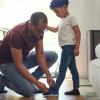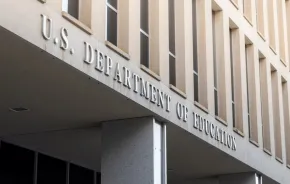
Photo:
Photo courtesy of Giddens School
Editor's note: This article was sponsored by Giddens School.
“A lot of people believe that culture can be found on a spreadsheet, that culture is something that you can copy and paste. It’s not. It’s about being very intentional. It’s about creating safe and brave spaces where folks from all different walks of life can find, curate and sustain an authentic place of belonging. That’s most commonly found through authentic relationships,” says Keith B. Wheeler, Ed.D. This year, Wheeler is stepping into the position of head of school at the independent Giddens School in Seattle, and he is giving a lot of thought to what it takes to intentionally create a positive, inclusive school culture.
Authenticity
A school’s culture expresses the character of its community. Without deliberate effort, a school’s atmosphere can degrade to one of apathy and neglect. Everyone who is part of the community, from administrators to staff and families, has a role in building the school’s culture. That means anyone can take the first step toward making a difference.
“There is no right or wrong way. It all stems from centering authenticity, because people know when you’re posturing instead of coming from a place where you are truly invested in them,” says Wheeler.
For school leadership, making a true investment in community requires good policies, but it starts with simply showing up to build individual relationships.
“That’s in the way that you greet people. It’s in the way that you communicate to people. That’s in the way you express value and importance,” says Wheeler. “Change can only happen at the speed of trust. People have to see you. You have to be hand in hand, face to face with every member of your community. That takes being very intentional. If you don’t organize your day around being of service and engaging with people, how will they ever offer an olive branch to trust you?”

Shared values
Authentic relationships are built on shared values. Wheeler comes to Giddens from a high-performing college preparatory school in one of California’s wealthiest communities. There, social justice was pursued through strategic initiatives. In contrast, Seattle’s much smaller Giddens School has centered its culture on equity and social justice.
“Giddens is a 360-degree difference in terms of its commitment, its legacy and its proven practice around this work. We have a 50-year legacy of being directly entrenched in social justice in Seattle, and I’m interested in what’s going to be our commitment in this work 50 years from now.”
Giddens School presents integrated academic subjects through a social justice lens. While other school cultures emphasize test results or admission rates to prestigious secondary schools, Giddens focuses on equity in the classroom — giving students voice and agency.
“I want our curriculum to be well informed, to be deep and meaningful. It should position our students not to be robotic thinkers but to be intellectually nutritious to where they’re coming into the classroom and giving opinions and meaningful responses to their peers,” says Wheeler. As a Seattle native who remembers when the Giddens campus was a community hub, Wheeler looks forward to building on the school’s relationships in the neighborhood through the development of community service learning projects.
“I want our young people here to be learning about policies, procedures and best practices that are taking place and being shaped by local government. I want our students to walk out with a global lens about how they can become informed citizens to combat injustice,” he says.
Parents’ role
“Parents and caregivers have one of the most important roles in the school,” says Wheeler. “That starts with engagement — and that takes time and sustained attention.”
Not every school encourages parental involvement as actively as Giddens does, but every parent has a right to be engaged in their child’s education.
“It’s important for parents to ask questions and remain inquisitive,” says Wheeler. Talking to your child and their teachers about what they are learning in school is the first step. When you hear about policies under consideration or planned curriculum changes, engage with administrators and officials. Especially when schools are underfunded, parents must advocate for their children. But parents need to consider more than just their own child’s needs and advocate for all of the children in their school’s community. Create and contribute to information-sharing networks — from classroom newsletters to Facebook groups — to help other parents become engaged in the school community with you.
“Schools can only do so much. In particular, in areas where schools have been historically underfunded, it takes a communal approach,” says Wheeler.

Finding community
When you are choosing a school, Wheeler says that the clearest indicator of a healthy community is diverse representation across every level of the organization, from the top leadership to the students in the classroom.
“Representation is critically important. What I mean by representation is not just racial representation. I mean socioeconomic representation, gender, class, neurological diversity. If I can see myself represented on the board, I have a hunch that my perspective and experiences are part of the conversations that are driving the institution. I also want my child to see himself or herself in the leadership and the teachers and staff. And what is most significant as a parent of school-age children, I’m going to look at the representation of the student body. All the research says that the more diverse your populations are, the fewer disciplinary issues you have, the fewer cultural issues you have in terms of battling behavior.”
Not many school communities in the Puget Sound area have achieved that type of vertical and horizontal diversity. So, no matter what school your child attends, it will take effort to ensure that everyone feels represented in the culture of the school. Wheeler notes, “When it comes to school culture and community, you have to be a constant student. There is no right way, there is no wrong way. But there is an authentic way. There is an engaged way. When you’re operating with your true north being a sense of belonging for every student, you will always find yourself in the right space doing the right work.”
|
Sponsored by: |












